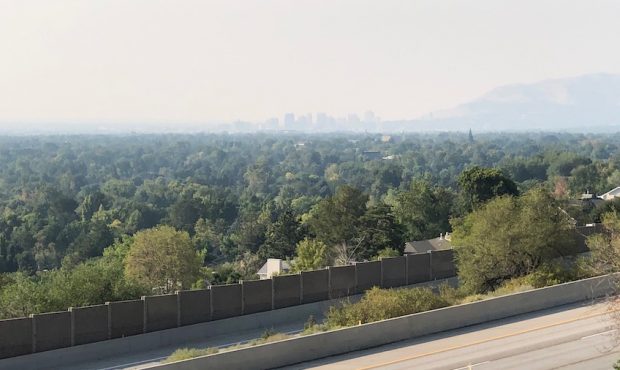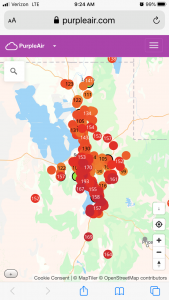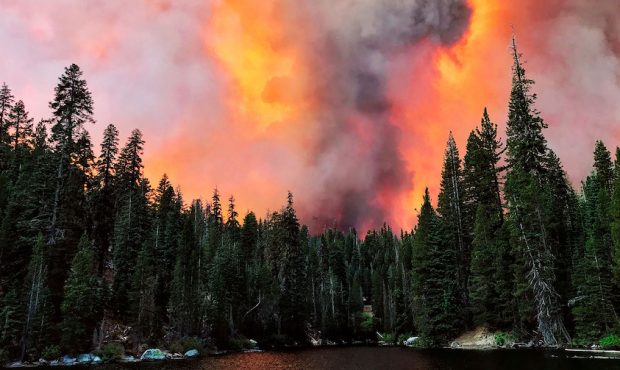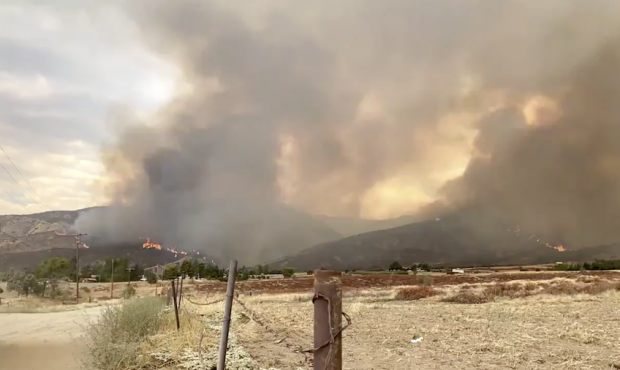University Of Utah Researchers Work On Better Smoke Forecasting
Sep 7, 2020, 5:59 PM | Updated: 6:24 pm

Salt Lake City saw unhealthy air quality on Labor Day. (Jed Boal/KSL TV)
(Jed Boal/KSL TV)
SALT LAKE CITY, Utah – Thick smoke from wildfires in California should get blown out of most of Utah Monday evening, but researchers with the University of Utah said wildfire smoke will be a growing problem because of climate change.
Fortunately, the smoky air that has blanketed Utah over the last 24 hours should be gone later Monday night. But the atmospheric scientists said the extreme fire behavior that creates the smoke is becoming more common.
“This definitely ranks up with some of the worst conditions that we’ve had,” said Logan Mitchell, assistant research professor in atmospheric sciences at the University of Utah.

Utah’s air quality was some of the worst in the nation over Labor Day weekend.
Right now, California firefighters are trying to put out some of the worst wildfires in state history. Atmospheric scientists from the University of Utah said extreme fire behavior will continue to intensify.
“As things get warmer and the fires become more frequent — especially in the west — and larger, we’re going to have smoky days like this in the future,” said Mitchell. “As the soil gets dryer, plants become dryer and things become more combustible.”
That will make lightning-caused and human-caused fires more common, Mitchell said.
“Creating the underlying conditions that are more favorable for fires is what climate change is doing,” he said.
Mitchell’s colleague, assistant research professor Derek Mallia, told KSL extreme fire behavior is also showing them phenomena they’ve only read about in the past.
“We know theoretically that this stuff is possible. But these fires are just getting so so large that we’re seeing this extreme kind of fire behavior,” said Mallia.
Like a pyrocumulonimbus cloud — an explosive storm cloud created by the smoke and heat from a fire — collapsing on itself.
“It’s very extreme fire behavior,” Mallia said, describing the behavior.
The fire is emitting so much energy that it forms a thunderstorm.
“You have a thunderstorm that’s kind of embedded within the smoke plume,” said Mallia. “You only see this with the most severe fires.”
When the plume loses energy quickly, the cloud collapses, creating a downburst of smoke.
“This can be very dangerous for firefighters at the surface, as it can result in very erratic fire behavior because of the winds shifting around,” said Mallia.
That’s one reason they continue to work on a better wildfire smoke forecasting tool.
“It’s this new generation of numerical weather prediction models that can help us make better forecasts, especially for fires that are kind of local,” said Mallia.














